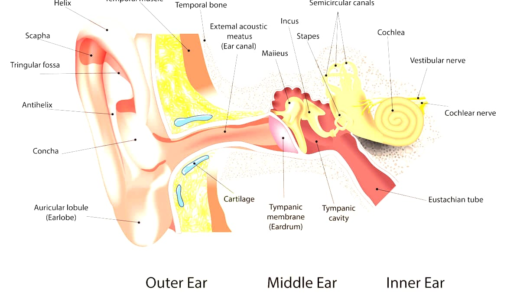Great white sharks, often misunderstood, are apex predators crucial to ocean health. Their reputation as killers stems from media portrayals and misconceptions about their behavior. They play vital roles in marine ecosystems, and understanding their characteristics and behaviors can shift public perception. Fascinating facts about their hunting skills and social behavior further illustrate their complexity.
Physical Characteristics of Great White Sharks
Great white sharks are fascinating creatures, easily recognized by their distinct physical characteristics. These formidable predators possess a streamlined body that can reach lengths of over 20 feet (6 meters) and weigh up to 2,400 pounds (1,100 kilograms). The most striking feature is their conical snout, which aids in hydrodynamics, allowing them to swim efficiently through the ocean.
Their coloration is another interesting aspect: the dorsal side is a grayish-blue, while the ventral side is white. This countershading helps them blend into their surroundings, making it harder for prey to spot them from above or below. Great white sharks also have powerful jaws lined with sharp, serrated teeth that can measure over 3 inches (7.5 cm) in length. These teeth are designed for gripping and tearing flesh, making them exceptional hunters.
In addition, their keen sense of smell enables them to detect prey from miles away, while their acute hearing can pick up the faintest sounds in the water. These physical traits combine to make great white sharks one of the ocean’s top predators, showcasing the fascinating adaptations that have evolved over millions of years.
Hunting Behavior of Great White Sharks
Understanding the hunting behavior of great white sharks reveals how they maintain their status as apex predators. These sharks employ a variety of strategies when hunting, often relying on stealth and surprise. They typically hunt alone, although some may form temporary groups in areas rich with prey.
Great white sharks are known for their unique hunting technique called “breaching,” where they launch themselves out of the water to surprise seals and other prey. This explosive attack can be quite spectacular and is often seen in areas with high seal populations. Additionally, they utilize ambush tactics, lurking near the ocean floor and then rapidly ascending to catch unsuspecting prey off guard.
Great white sharks also have an impressive ability to sense electromagnetic fields produced by other animals, which helps them locate prey even in murky waters. This sophisticated hunting behavior showcases their adaptability and intelligence, allowing them to thrive in various marine environments.
Diet of Great White Sharks
The diet of great white sharks is diverse and primarily consists of marine mammals, such as seals and sea lions, as well as large fish like tuna. They are opportunistic feeders, meaning they will consume whatever is readily available in their environment. A great white shark can eat up to 11 tons of food per year, depending on its size and age.
Interestingly, their diet can vary significantly based on geographic location. For example, in areas with abundant seals, they will primarily target these mammals, while in regions where large fish are more prevalent, they may focus on them instead. This flexibility in diet plays a crucial role in their survival and the health of marine ecosystems.
In conclusion, great white sharks are not only powerful predators but also play a vital role in maintaining the balance of ocean ecosystems. Their unique hunting strategies and diverse diet make them a fascinating subject of study for marine biologists and shark enthusiasts alike.
Comparing Great White Sharks to Other Species
Great white sharks are truly impressive when compared to other shark species. They can grow significantly larger than most of their relatives, like the tiger shark or hammerhead shark. The average size of a great white shark ranges from 13 to 16 feet (4 to 5 meters), while some individuals can exceed 20 feet (6 meters). This size advantage makes them one of the largest predatory fish in the ocean.
Behaviorally, great white sharks exhibit unique hunting techniques that set them apart. Unlike many smaller sharks that may hunt in schools, great white sharks are solitary hunters. Their hunting strategy often involves ambushing prey, which showcases their power and agility. In contrast, species like the bull shark often hunt in groups, relying on numbers to catch prey.
- Size Comparison: Great white sharks can grow larger than 20 feet, while most other species average between 8 to 14 feet.
- Behavior: Great whites hunt alone, whereas species like the blacktip reef shark are more social.
- Habitat: Great white sharks thrive in coastal waters, while others, like the whale shark, prefer open ocean environments.
This comparison highlights how great white sharks dominate their ecological niche, showcasing not only physical prowess but also behavioral adaptations that enhance their survival.
Role in the Ocean Ecosystem
Great white sharks play a crucial role in maintaining the health of ocean ecosystems. As apex predators, they help regulate the populations of marine mammals and large fish, which in turn promotes a balanced food web. By controlling the populations of these species, great white sharks prevent overgrazing of kelp forests and other vital habitats.
Moreover, the presence of great white sharks can indicate the overall health of marine ecosystems. A decline in their population may signal environmental issues, such as overfishing or habitat destruction. This makes them essential not just for their role as predators but also as indicators of ocean health.
- Population Control: They manage populations of seals and other prey, helping to maintain balance.
- Habitat Health: Healthy shark populations contribute to vibrant marine ecosystems.
- Indicator Species: Their presence reflects the overall condition of marine environments.
In summary, great white sharks are vital to the ocean’s ecological balance, and their conservation is essential for the health of marine environments.
Are Great White Sharks Dangerous to Humans?
Great white sharks are often portrayed as dangerous predators, but the reality is more nuanced. While there have been incidents of shark attacks on humans, these events are relatively rare. In fact, statistics show that the likelihood of a shark attack is extremely low compared to other risks in everyday life.
Most attacks occur due to mistaken identity, where sharks confuse humans for their natural prey, such as seals. Great white sharks do not typically seek out humans as food. Instead, they are curious creatures and may investigate swimmers or surfers out of interest.
- Low Attack Rates: Only about 10 unprovoked attacks occur annually worldwide.
- Curiosity: Sharks often bite to investigate, not to eat.
- Human Risk: You’re more likely to be struck by lightning than attacked by a shark.
Understanding the behavior of great white sharks can help dispel myths and fears. Education and awareness are key to fostering a more accurate perception of these magnificent creatures.
Factors Contributing to Their Reputation
Great white sharks often get labeled as killers, but this reputation is not entirely deserved. Several factors contribute to this negative image. First, their size and power intimidate many people, leading to fear-based perceptions. The fact that they can grow over 20 feet long and weigh up to 2,400 pounds doesn’t help. Second, the media plays a significant role in shaping public perception. Movies like “Jaws” have portrayed great whites as mindless killers, which has cemented a fear that overshadows their ecological importance.
- Misunderstood Behavior: Great whites often bite humans out of curiosity rather than aggression, leading to misconceptions.
- Media Influence: Films and sensationalized news stories amplify fears, focusing on rare shark attacks.
- Lack of Education: Many people lack understanding of shark behavior, leading to irrational fears.
By addressing these misconceptions, we can begin to appreciate the role of great white sharks in marine ecosystems rather than viewing them solely as threats.
Media Portrayal and Public Perception
The portrayal of great white sharks in media significantly influences public perception. Movies often depict them as ferocious predators, reinforcing the idea that they are dangerous to humans. Documentaries, while sometimes more factual, can still sensationalize shark behavior, making them seem more aggressive than they are. This portrayal can lead to widespread fear, resulting in negative attitudes towards these creatures.
- Film Influence: Iconic films like “Jaws” have instilled a lasting fear of sharks.
- News Coverage: Reports of shark attacks often receive extensive media coverage, amplifying public fear.
- Educational Content: Few media outlets focus on the ecological benefits of great whites, perpetuating misunderstanding.
As a result, it is crucial to promote more balanced narratives that highlight the importance of great white sharks in maintaining healthy ocean ecosystems.
Interesting Facts
Great white sharks are full of surprises that might change your perception of them. For instance, did you know that they can detect a drop of blood in the water from over three miles away? Their sense of smell is incredibly acute, making them efficient hunters. Additionally, great white sharks can swim at speeds of up to 25 miles per hour, showcasing their agility.
- Longevity: Great whites can live for over 70 years, making them one of the long-lived shark species.
- Unique Birth Method: They give birth to live young, with a single litter containing up to 14 pups.
- Social Behavior: Although often solitary, they can form temporary groups in areas rich in food.
These intriguing traits highlight the need for a deeper understanding of great white sharks, beyond the fear and myths that often surround them.





Comments are closed.